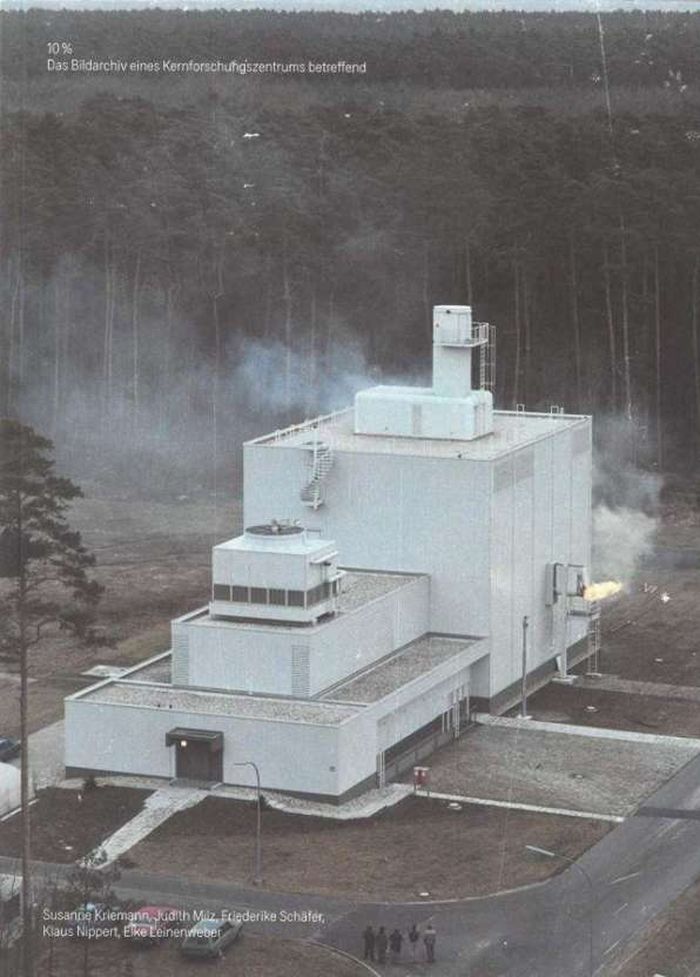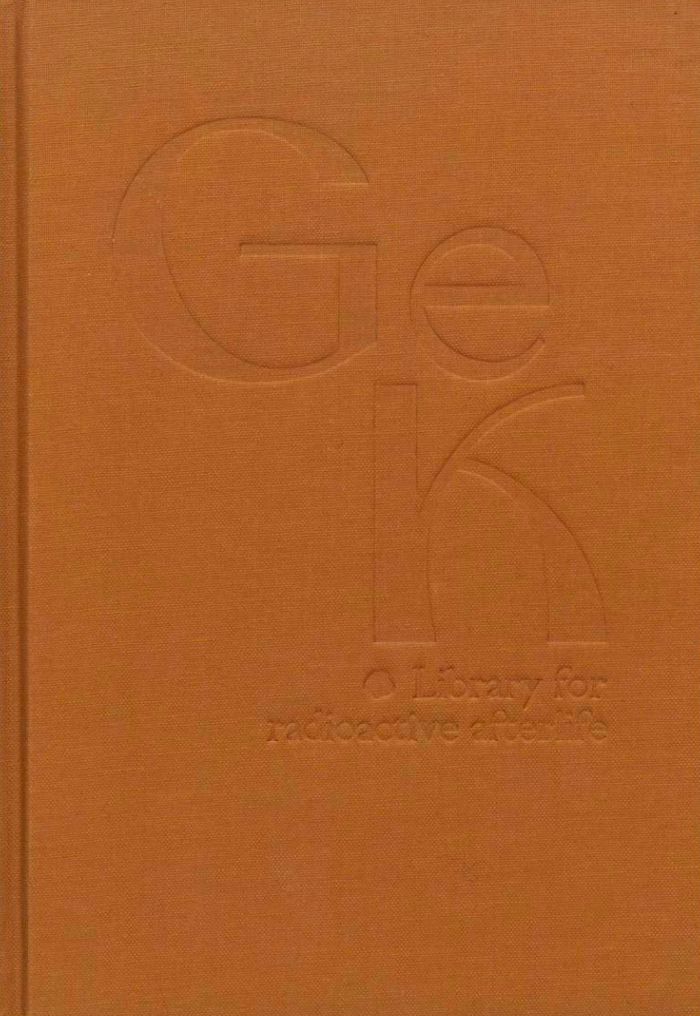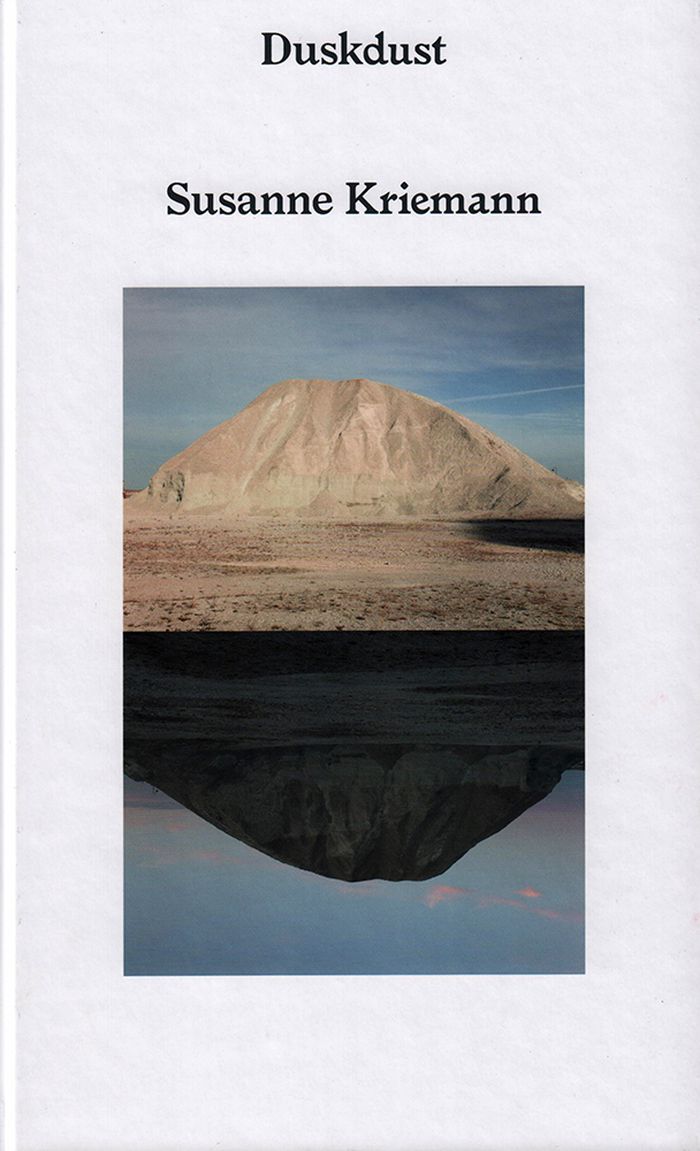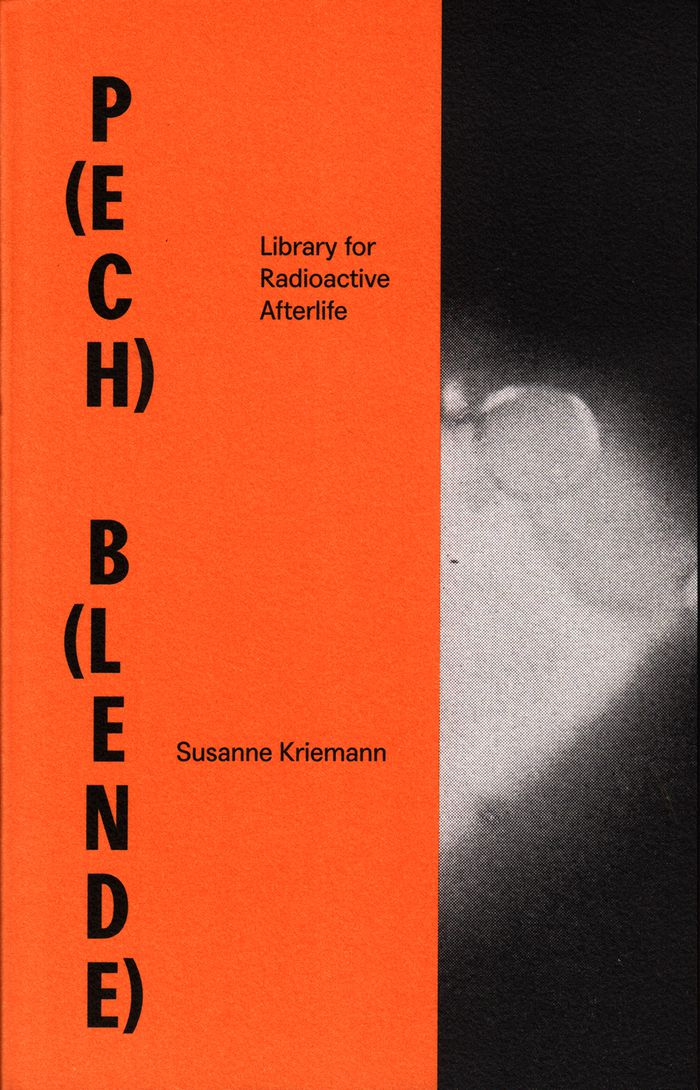$70.00
(available in store)
Summary:
Unknown lady in the radiation protection department, puddle, dancing couple in costume, damage to a waste drum, retiree send-off, lead shielding, burnt-out glovebox, scorpion with microchip—these are all captions to photographs of Germany’s first major nuclear research facility. In 1957, professional photographers began to make an on-site record of procedures at the(...)
November 2021
10% : Das bildarchiv eines kernforschungszentrums betreffend
Actions:
Price:
$70.00
(available in store)
Summary:
Unknown lady in the radiation protection department, puddle, dancing couple in costume, damage to a waste drum, retiree send-off, lead shielding, burnt-out glovebox, scorpion with microchip—these are all captions to photographs of Germany’s first major nuclear research facility. In 1957, professional photographers began to make an on-site record of procedures at the Kernforschungszentrum Karlsruhe (KfK, Karlsruhe Nuclear Research Center). In 2017, the decision was made to digitize ten percent of this image archive. Based on current concerns regarding the whereabouts of contaminated nuclear waste, the publication brings together over thirty perspectives from the fields of art, sociology, politics, and science as well as accounts of people who were directly involved with the facility. ''10%: Concerning the image archive of a nuclear research center'' sets out to delineate and visualize the afterlife of nuclear research. German edition.
$40.00
(available in store)
Summary:
Gessenwiese and Kanigsberg form part of a landscape that has been in a process of constant change since 1946. The overburden from the mining industry created radioactive spoil heaps and lakes that are being rehabilitated by various means: plants growing on Gessenwiese accumulate contaminants from the soil. Textiles are used to slowly dry out the lakes and bind the(...)
Susanne Kriemann: Ge(ssenwiese), K(anigsberg)
Actions:
Price:
$40.00
(available in store)
Summary:
Gessenwiese and Kanigsberg form part of a landscape that has been in a process of constant change since 1946. The overburden from the mining industry created radioactive spoil heaps and lakes that are being rehabilitated by various means: plants growing on Gessenwiese accumulate contaminants from the soil. Textiles are used to slowly dry out the lakes and bind the radioactive dust. The banked mounds are returned to the earth bit by bit. These continual changes to the volumes in the landscape and their afterlife are the conceptual starting point for "G(essenwiese) K(anigsberg)." In recent years, Susanne Kriemann has developed a radically expanded idea of photography that investigates new systems for registering events and geological periods.
Photography monographs
books
$21.00
(available to order)
Summary:
This book can be read as an inventory of the trajectory that Kriemann pursued in relation to archaeology, to the artefact, to the image of the individual at work and the idea of the desert as a symbol of the modern desire to create an empty slate, a tabula rasa. Material from Agatha Christie’s photographic archives is related to photographs that Kriemann produced of the(...)
Ashes and broken brickwork of a logical theory
Actions:
Price:
$21.00
(available to order)
Summary:
This book can be read as an inventory of the trajectory that Kriemann pursued in relation to archaeology, to the artefact, to the image of the individual at work and the idea of the desert as a symbol of the modern desire to create an empty slate, a tabula rasa. Material from Agatha Christie’s photographic archives is related to photographs that Kriemann produced of the Syrian Desert and archaeological sites in Mesopotamia.
books
May 2010
Contemporary Art Monographs
Susanne Kriemann: Duskdust
$36.00
(available in store)
Summary:
Duskdust is an artist book by Susanne Kriemann. It takes as its starting point the former industrial site of limestone mining at Furilden peninsula on the northeastern coast of Gotland, Sweden’s biggest island. It is informed by the artist’s ongoing preoccupation with photography, labor, and archaeology and includes photographs taken during her residencies and site(...)
Susanne Kriemann: Duskdust
Actions:
Price:
$36.00
(available in store)
Summary:
Duskdust is an artist book by Susanne Kriemann. It takes as its starting point the former industrial site of limestone mining at Furilden peninsula on the northeastern coast of Gotland, Sweden’s biggest island. It is informed by the artist’s ongoing preoccupation with photography, labor, and archaeology and includes photographs taken during her residencies and site visits, archival material as well as text contributions by invited authors.
Photography monographs
$40.00
(available to order)
Summary:
Susanne Kriemann's artist’s book "P(ech) B(lende), library for radioactive afterlife" looks at the political and actual invisibility of the highly radioactive mineral pitchblende (uraninite). From 1946 to 1989 pitchblende was mined in the Erzgebirge (Ore) Mountains in an area contained within the former GDR and was an important component in the USSR’s nuclear arsenal. The(...)
Susanne Kriemann: P(ech) B(blende). Library for radioactive afterlife
Actions:
Price:
$40.00
(available to order)
Summary:
Susanne Kriemann's artist’s book "P(ech) B(lende), library for radioactive afterlife" looks at the political and actual invisibility of the highly radioactive mineral pitchblende (uraninite). From 1946 to 1989 pitchblende was mined in the Erzgebirge (Ore) Mountains in an area contained within the former GDR and was an important component in the USSR’s nuclear arsenal. The publication brings together seven texts viewing the subject with a literary eye through the lens of media theory. All the texts deal with the documentation of radioactive materials, their effects, and afterlife. The book P(ech) B(lende) ties in with Kriemann’s exhibition Pechblende (Chapter 1) at the Ernst Schering Foundation in Berlin (17, March to 5, June 2016). The work was previously on show at Prefix ICA in Toronto under the title Pechblende (Prologue).
Photography monographs



